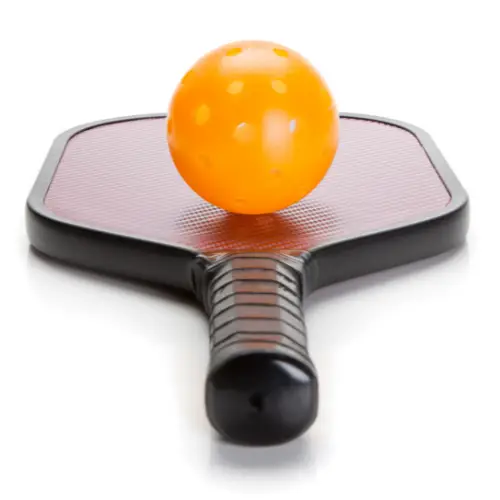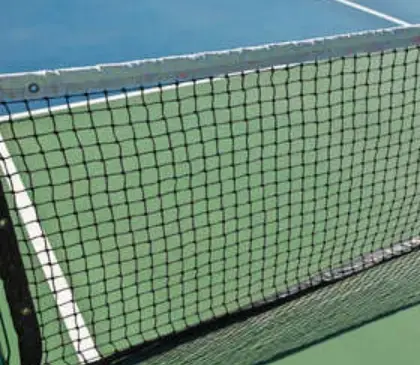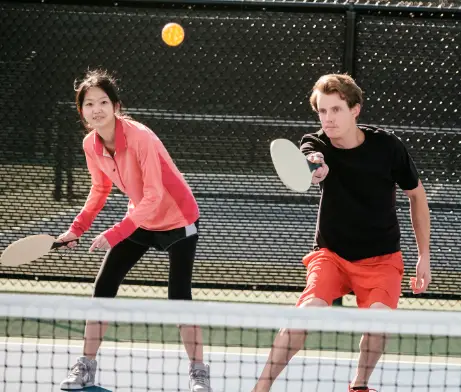Pickleball is a fun and popular racquet sport that combines elements of tennis, badminton, and ping-pong. With its increasing popularity, more and more people are getting involved in this exciting game. However, like any physical activity, playing pickleball can also lead to injuries. While most of these injuries are minor, some can be severe and lead to long-term damage. In this article, we will discuss some of the most common injuries that can occur while playing pickleball and how to prevent them. By understanding these injuries and taking the necessary precautions, players can continue to enjoy the game while minimizing their risk of injury.
1. Ankle Injuries
Ankle injuries are a common injury in pickleball. The rapid side-to-side movements, sudden stops, and quick changes in direction that are characteristic of the game can put a lot of stress on the ankle joint, making it more susceptible to injury. Some of the most common ankle injuries in pickleball include:
- Ankle sprains: An ankle sprain occurs when the ligaments in the ankle are stretched or torn. This can happen when the ankle is forced to move beyond its normal range of motion, such as when landing after a jump or making a sudden change in direction. Ankle sprains can range from mild to severe, and can take anywhere from a few days to several weeks to heal.
- Achilles tendonitis: The Achilles tendon connects the calf muscles to the heel bone, and is essential for running, jumping, and other movements that require strong and flexible ankles. Achilles tendonitis is a condition that occurs when the Achilles tendon becomes inflamed, which can cause pain, swelling, and stiffness in the ankle. This condition is often caused by overuse, and can be aggravated by playing pickleball on hard surfaces or using improper footwear.
- Plantar fasciitis: The plantar fascia is a thick band of tissue that runs along the bottom of the foot, and is responsible for supporting the arch of the foot. Plantar fasciitis is a condition that occurs when this tissue becomes inflamed, which can cause pain and stiffness in the foot and ankle. This condition is often caused by overuse, and can be aggravated by playing pickleball on hard surfaces or using improper footwear.
2. Shoulder Injuries
Shoulder injuries are one of the most common injuries in pickleball, especially for beginners or players who have not properly warmed up before playing. The repetitive overhead swinging motion used to hit the ball can put a lot of stress on the shoulder joint, leading to strains, sprains, and even tears in the muscles, tendons, and ligaments.
Here are some common shoulder injuries in pickleball:
- Rotator cuff injury: The rotator cuff is a group of muscles and tendons that surround the shoulder joint and help to stabilize and move the arm. Overuse or sudden trauma can cause a tear in the rotator cuff, leading to pain, weakness, and limited mobility.
- Impingement syndrome: This occurs when the rotator cuff muscles get pinched between the shoulder blade and the humerus bone, leading to inflammation and pain.
- Bursitis: Bursae are small fluid-filled sacs that cushion the joints and reduce friction between bones and soft tissues. Overuse or trauma can cause inflammation of the bursae in the shoulder, leading to pain and swelling.
- Dislocation: A dislocated shoulder occurs when the humerus bone comes out of the shoulder socket. This can be caused by a sudden impact or fall and can be very painful.
3. Knee Injuries
Knee injuries are a relatively common injury in pickleball, which is a fast-paced sport that involves a lot of quick movements and changes of direction. The following are some of the most common knee injuries that can occur while playing pickleball:
- Patellar Tendonitis: This injury occurs when the patellar tendon, which connects the kneecap to the shinbone, becomes inflamed due to overuse. It is a common injury in athletes who play sports that require a lot of jumping and running, such as pickleball.
- Meniscus Tear: The meniscus is a piece of cartilage in the knee joint that acts as a shock absorber. A meniscus tear can occur when the knee is twisted or rotated while bearing weight. This injury can cause pain, swelling, and a limited range of motion.
- ACL Tear: The ACL (anterior cruciate ligament) is a ligament in the knee that provides stability to the joint. An ACL tear can occur when the knee is hyperextended or twisted. This injury can cause significant pain and instability in the knee.
- MCL Tear: The MCL (medial collateral ligament) is a ligament on the inside of the knee that provides stability to the joint. An MCL tear can occur when the knee is hit on the outside, causing the ligament to stretch or tear. This injury can cause pain, swelling, and instability in the knee.
- Knee Bursitis: Bursitis is the inflammation of the bursae, small fluid-filled sacs that act as cushions between bones and soft tissues in the knee joint. This injury can cause pain and swelling in the knee.
4. Elbow Injuries
Elbow injuries are a common problem among pickleball players, especially those who play frequently and with a lot of intensity. The repetitive motions involved in playing pickleball, such as swinging the paddle and hitting the ball, can lead to overuse injuries in the elbow. Here are some of the most common elbow injuries in pickleball players:
- Tennis elbow: This is a type of tendinitis that affects the outer part of the elbow, where the tendons attach to the lateral epicondyle. It is caused by repetitive motions, such as hitting the ball with the paddle, that put strain on the tendons. Symptoms include pain and tenderness on the outside of the elbow, as well as weakness in the forearm.
- Golfer’s elbow: This is a similar condition to tennis elbow, but it affects the inner part of the elbow instead. It is caused by overuse of the tendons that attach to the medial epicondyle. Symptoms include pain and tenderness on the inside of the elbow, as well as weakness in the wrist and hand.
- Elbow bursitis: This is an inflammation of the bursa, a small sac of fluid that cushions the joint. It can be caused by repetitive motions or by direct trauma to the elbow, such as falling on it or hitting it against a hard surface. Symptoms include swelling, redness, and pain around the elbow.
- Ulnar collateral ligament (UCL) injury: This is a tear or sprain of the ligament on the inner side of the elbow, which can occur from repetitive motions or from a sudden impact. It is commonly known as “Tommy John” surgery, which is a type of surgical repair for the UCL. Symptoms include pain on the inner side of the elbow, as well as instability or a “loose” feeling in the joint.
5. Back Injuries
Back injuries are a common type of injury that can occur while playing pickleball. The repetitive twisting and turning motions involved in the game can put a lot of strain on the back, particularly the lower back. Poor posture and improper technique can also contribute to back injuries. Some of the most common back injuries in pickleball players include muscle strains, herniated discs, and sciatica. To prevent back injuries, it is important to use proper technique, warm up before playing, and incorporate core-strengthening exercises into your fitness routine. Additionally, it is important to listen to your body and take breaks if you experience any pain or discomfort.
6. Dehydration and Heat Exhaustion
While pickleball is generally a low-impact sport, players can still be at risk for dehydration and heat exhaustion, especially in hot and humid weather conditions. Dehydration occurs when the body loses more fluids than it takes in, which can lead to symptoms such as thirst, dry mouth, fatigue, and headache. Heat exhaustion, on the other hand, is a more serious condition that can occur when the body overheats and is not able to cool itself down properly. Symptoms of heat exhaustion include dizziness, nausea, vomiting, rapid heartbeat, and confusion. To prevent these injuries, it is important for players to stay hydrated by drinking plenty of water before, during, and after playing, and to take breaks and rest in shaded areas as needed.
Conclusion
In conclusion, while pickleball is a relatively safe sport, injuries can still occur. Some of the most common injuries in playing pickleball include strains, sprains, and overuse injuries to the shoulder, elbow, wrist, and knee. To prevent these injuries, players should warm up properly, use proper technique, and wear appropriate shoes and protective gear. It is also important to listen to your body and rest when needed. If an injury does occur, seeking prompt medical attention and following a proper rehabilitation plan can help to speed up the recovery process and prevent long-term damage. By taking the necessary precautions and being aware of the risks, players can enjoy the benefits of this fun and exciting sport while minimizing the risk of injury.







